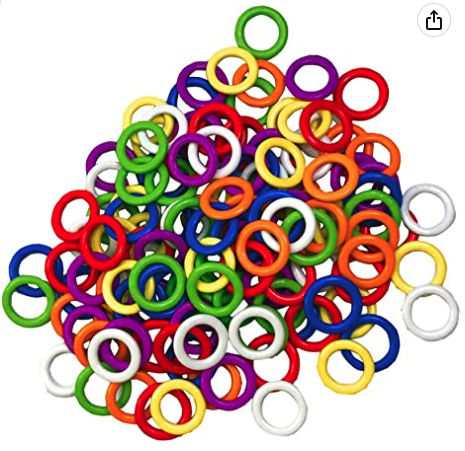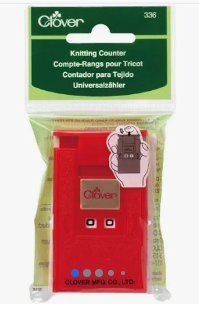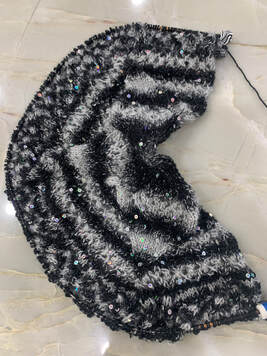Many people have commented to me when they see me knitting that I am so patient. But I don't feel patient at all! I think I am knitting to help pass the time because I don't want to just sit still! Now I will share how I think about the speed that you can knit and some ideas of how to get faster!
English vs Continental .... and then Portuguese!
If you are newer to knitting, then there is still some learning of the mechanics of how to knit going on. It takes time to build the muscle memory of how to execute knitting stitches. There are two usual techniques of how someone knits: English style (also called "throw" or "American"), where you wrap the yarn with your right-hand, and Continental style, where you wrap the yarn with your left-hand. I know there are folks who say there is a handedness to knitting, but I consider that you use both hands, so I'm not totally sure if there is. I do believe that continental style knitting is faster, because when you "throw" with your right hand, you remove your hand from the needle to wrap the yarn. This is because the working yarn is attached to the right-hand needle. (I think this is why knitting by default is technically "right-handed," because this is the direction that we knit). When you wrap with your left-hand (or really a left-finger), it is faster because you don't have to take your hand off the needle. There are actually other techniques to wrap yarn, one of them being Portuguese knitting, where the yarn is threaded through a pin attached to your shirt, and you don't use your fingers to wrap at all! This method might be even faster than both English and Continental, but once again you must master the mechanics for any of these techniques to work for you.
Needles
The next thought that comes to mind when thinking about how quickly I can knit is which needles you are using. While bamboo or driftwood needles, as well as plastic, are more "sticky," metal needles can help to speed up the process. "Addi turbos" are a smooth metal that are named that because of this. The pointy-ness of the needles will also make a difference. I noticed this recently when I was working up a couple of swatches using different needles. Some of my older bamboo needles have less pointy tips, which can make it more difficult to put the needle into the next stitch to knit. So something to consider would be how pointy your needles and how smooth and slippery they are! If the stitches slide easily (such as on metal) then they will be faster to queue up to cruise through! The danger to watch out for here is that if stitches slip more easily, they are more likely to slip off the ends of the needles when you are knitting, so be careful for that!
The size of needles can also make a difference, and whether they are straight, circular, or double pointed needles! It all depends on how easy they are to hold. Projects requiring larger or very small needles tend to be slower for me. Big needles make my hands tired faster. And small needles mean thinner yarn and sometimes needing to see it that small can make me knit slower. You can't always make an adjustment here, depending on your project. Some circular needles, such as 9" ones, don't have as much of a needle to hold onto, so that can make it feel slower to knit. Although, this may still be faster than working with a small round of double pointed needles, where you have to be continuously shifting the needles as you work a round!
Yarn
Some yarns are more "splitty" than others. And fuzzy yarns (such as mohair, or ribbon yarns) make it harder to see the separation between stitches. Using a smooth and medium weight yarn will always be faster than a really thin or fuzzy yarn.
Patterns
The stitch pattern you are working will also make a difference in your speed. Doing something more complex like cables or lace will definitely be slower than straight stockinette stitch! But one tip I would offer is that if you are doing a pattern that has repeats, to place a stitch marker between each repeat. This will make it faster for you to keep track of where you are, and help with the memorization that sometimes occurs when we knit a repeating pattern a lot of times. If you are working a pattern that requires a lot of counting, using stitch markers to break that up so you don't have to count back to the beginning also helps. This should also help you to avoid mistakes or catch them sooner.
Depending on how much of your brain space you are using to interpret the pattern will also affect your knitting speed. How familiar are you with the stitches you are doing? Do you have to keep referring to a key in a chart? When I was earlier in my knitting career I spent a lot more time writing out what knitting patterns were saying in a condensed way. This helped me to knit faster because I wasn't doing as much interpretation while I was knitting. (But be warned! There is a lot of room for error when you write things out.) Sometimes it can be helpful to enumerate instructions so you don't have to keep translating what the pattern is telling you to do.
Hopefully you found some helpful tips in here that will help you to get faster with your knitting so you can get more projects done! Please leave me a comment if you found this useful or if you have another suggestion to speed up your knitting!





























 RSS Feed
RSS Feed